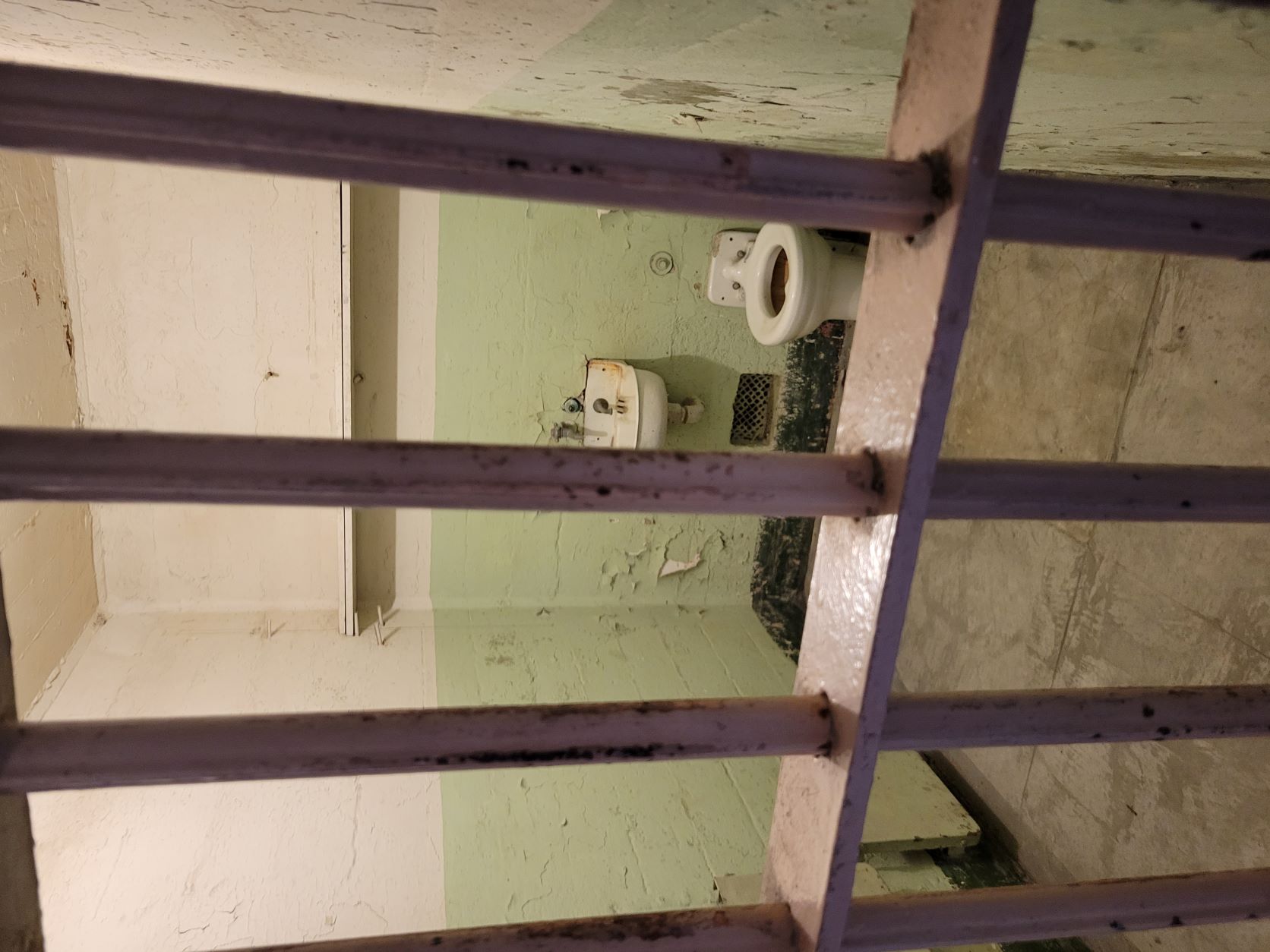The Feds Step In
Before Alcatraz was officially a Federal Penitentiary, it served as a military prison. The prison was assigned to serve the United States Army west of the Rockies. New guards went in and $250,000 was given to make Alcatraz a “state of the art” prison. Everything was demolished on Alcatraz. The prison was a three story high cellhouse, which was taller than the lighthouse. The cellhouse could hold up to 600 men (one to a cell), and was heated, lighted, ventilated and had a steam cooking apparatice in the kitchen. Construction on the prison was completed in late 1911.
For the remaining years that Alcatraz was a military prison they attempted a change in out-look. They shifted their emphasis to rehabilitation. Except for a few, all the prisoners were considered to be assigned to punishment companies. The monthly periodical of Alcatraz pictured it as, “a guiding program of rehabilitation.” Although most prisoners had the opportunity to get some education of Alcatraz, it was still a prison. Soon the cost of operating Alcatraz became too high. Two people from the department of Justice were looking for a “Super Prison.” I guess Alcatraz was just what they were looking for because on October 13, 1933 Alcatraz was handed over to the Department of Justice.

As soon as Alcatraz was handed over work began. They built more cellhouses. Barbed wire was put up around the prisoners’ areas and cement was used to seal old fortification buildings, which could have served as hiding places. New families arrived and new prisoners. Thirty-two prisoners were left behind by the military for the new Federal Prison. Gates were also put up and telephones taken out.
Open For Business
The prison officially opened for “business” on July 1, 1934. From the beginning rumors swarmed about Alcatraz. Journalists did numerous stories depicting Alcatraz as a horrible place of torture. Prisoners who were released only backed up these allegations. Among some of these prisoners were: Verrill Rapp who said he suffered from, “inhumane treatment.” William Henry Ambrose told reporters that psychological torment was getting to all of them. Alfred Loomis also stated, “They never give a guy a break.” Other released convicts published their stories in periodical magazines and even books such as Leon Thompson.

Some of the allegations of psychological torture came from “the hole.” The hole was a group of cells that were segregated from the rest of the cells. Inmates in the hole did not eat or work with the inmates. The cells in the hole were dark, small, and cold. The inmates got confined to these cells for violence, escape attempts, or homosexuality. The degree of the actions determined the amount of time spent in the hole. The time spent in the hole varied from days to years.
Along with psychological torture, Alcatraz was known for its brutality. It was said that most brutality occurred between prisoners. One common practice of prisoners was to draw straws to decide who would kill another convict, whom they hated. One ex-convict, Henry Floyd Brown said that unlike in civilian life, in prison if you saw a hurt or dying man you would ignore him. Brown said the reason for this was because you never knew why he was hurt and “he might a needed killin’.” Brutality between prisoners and guards was more rare, because prisoners did not want to end up in the hole. Guards also knew the prisoners had nothing to live for, and at any moment a prisoner might decide to commit suicide and take somebody with him.
Escape Proof?
Despite rumors that Alcatraz was “escape proof” it was not. A number of prisoners attempted escapes and several possibly succeeded. Unfortunately, escapees were most often found and returned to Alcatraz. In on book entitled Eyewitness on Alcatraz there are logged 14 different escape attempts between December 1937 to September 1958. A lot of escape attempts ended in death. This was due to the cold water, undertows, sharks, and lack of substantial boats or rafts. One of my favorite attempts was by a man named Huron “Ted” Walters. Walters attempted to swim and had “a couple of cans tied to his waist for buoyancy.” There were five men who attempted escape but were never found. All were presumed dead, with only a possible exception for Clarence and John Anglin. Many ingenious plans of escape were thought up, but none were absolutely proven successful.


Shut down
If Alcatraz was such an effective prison why did they close it? There were many stories as to why Alcatraz was closed. Some believe it was the Morris-Anglin escape attempt. Alcatraz was also quickly decaying. The most logical explanation for the closure lies in finances. Alcatraz was a very costly endeavor. At any other prison it cost $5.27 a day per prisoner and $4.00 per prisoner for security. At Alcatraz it cost $13.81 a day per prisoner and $9.69 per prisoner for security. It cost $32.77 a day per prisoner more at Alcatraz with other additional costs. The lack of funds for reconstruction of the deterioration and the expensive cost of up-keep were the reason for Alcatraz closing. Alcatraz’s last day as a Federal Prison was June 1963, but it would always be famous as the “escape proof” prison that housed infamous prisoners like Al Capone, “Machine Gun” Kelly, and the Birdman of Alcatraz.
